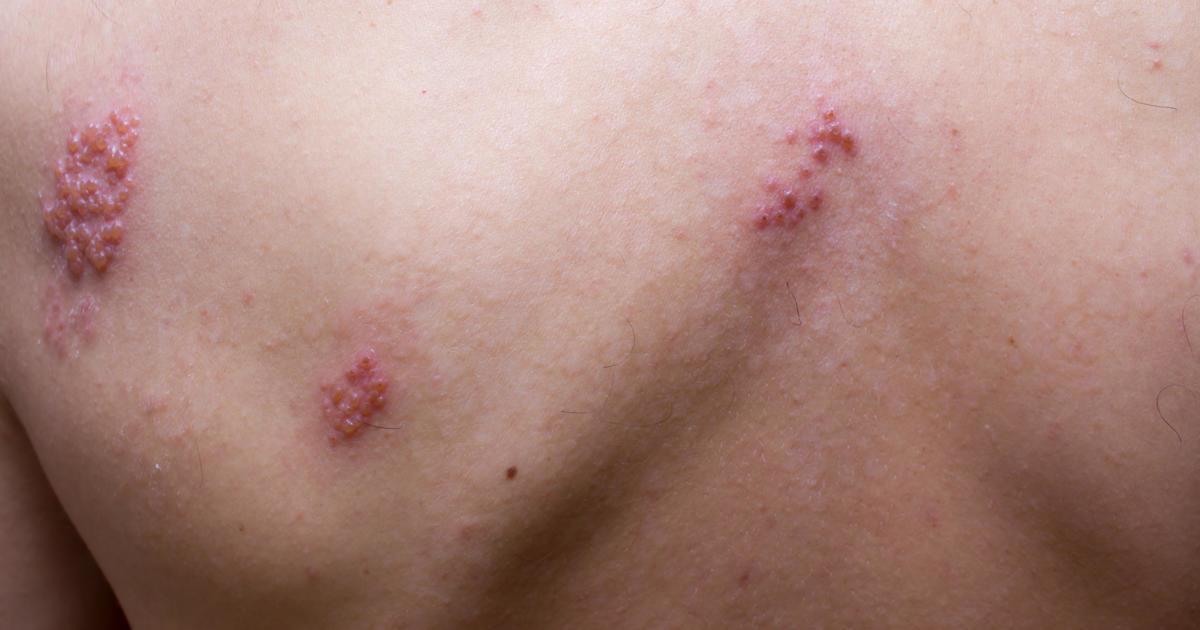Critical Warning Signs Of Shingles
Shingles is quite a painful condition. It is a viral infection, stemming from the varicella-zoster virus, which is the same one that causes chickenpox. While individuals can only get chickenpox once, typically, the virus will remain dormant in their system for years, when it can then reappear as shingles. The worst symptoms tend to last approximately two to four weeks, however, in some cases, early warning signs develop before a painful rash develops. Shingles patients must receive treatment as soon as possible to mitigate this condition's painful effects. Of course, it is crucial to identify the symptoms of shingles to know this is the cause and to subsequently get the appropriate treatment.
Reveal the critical warning signs of shingles now.
Burning, Tingling, And Itching

Although some areas are more commonly affected in comparison to others, shingles can affect many parts of the body. Burning, tingling, and itching on the body is often the very first symptom, as sensitivity to pain increases. This dull sensation is what causes patients with shingles to experience itching and burning. Some shingles patients will feel a dull tingling, though others will experience sharp pain. It's important to seek medical attention regardless of the affected area, but symptoms affecting the face require immediate medical attention. On average, once this dull pain begins, a rash will surface one to three days later.
Uncover details on more symptoms of shingles now.
A Severe Headache

Shingles can cause headaches that are more like migraines in terms of severity. Some experience 'ice pack headaches,' which are sharp and often compared to a stabbing sensation, often due to pain resulting from the cranial nerves. A headache due to shingles can also result in pain around the eyes or ears, which many often mistake for a migraine instead.
While there are other warning signs of shingles that often appear alongside a severe headache, it is still important to discuss migraine-like headaches with a doctor, who can conduct tests and ask the appropriate questions to determine the cause and recommend treatment.
Learn more about the warning signs of shingles now.
Numbness

Numbness is also a common warning sign of shingles, even though some individuals may expect the opposite, as shingles is known to be a painful condition. As this virus develops, inflammation occurs under the skin and the patient's nervous system is affected. As the virus becomes activated, it travels down nerve fibers to the skin.
In many cases, sensory nerves swell and become damaged within a localized area. This is what results in numbness and the tingling and burning many individuals with shingles experience. Some patients will develop a form of neuropathy after their rash subsides, better known as nerve damage. Individuals who experience persistent pain or numbness should work with a doctor to develop a treatment plan.
Continue reading to reveal more shingles warning signs now.
A High Fever

When shingles begins to develop and early symptoms surface, many patients experience a fever of one hundred degrees Fahrenheit or higher. Alongside a fever, patients with shingles typically experience chills before the rash appears on their skin. This leaves patients feeling fatigued and worn out.
A fever is a good indication an individual's immune system is trying to battle an infection or virus. The body naturally raises its temperature, because certain viruses and bacteria cannot live at higher temperatures. Once an individual's temperature rises above 100.4 degrees Fahrenheit, it is considered medically significant.
Get details on the next symptoms linked to shingles now.
Flu-Like Symptoms

Many patients who have shingles experience an overall 'unwell' feeling, including symptoms such as nausea. In some cases, individuals affected believe they're developing the flu, however, when some of the other warning signs are experienced alongside these flu-like symptoms, shingles may be the real issue.
Although nausea and an upset stomach are fairly common, patients may also feel achy. Before a rash breaks out, some individuals experience a dull ache throughout their muscles. For elderly patients, this pain can be serious enough to interfere with daily activities, forcing them to stay in bed.
Discover more serious indicators of shingles now.
Red Rash And Blisters

The rash associated with shingles is distinct from other rashes individuals may get. This distinct rash should make it easy for patients and their doctors to determine if they have shingles or not. A shingles rash consists of lots of blisters filled with fluid. The red rash and blisters are often very painful and will cause significant discomfort. Typically, a shingles rash is located on only one side of the body. The shingles virus most commonly affects nerve roots in the back, neck, chest, or buttocks, so these areas are where this kind of rash will most commonly be found but it can occur anywhere on the patient's body. The blisters from a shingles rash should scab over within ten days. Within two weeks, the blisters should be gone altogether. If a patient's immune system is weakened, it may take longer for their blisters from shingles to heal.
Learn more about how to spot shingles now.
Sensitivity To Touch

Sensitivity to touch can be another warning sign an individual may have shingles. Since shingles is often very painful, it causes some patients to be more sensitive to being touched. For some, this may mean they experience pain if someone taps their back. For others, they may be so sensitive to pain that the wind hitting their skin or the feel of their shirt on their back is enough to cause significant pain. Though unlikely, it is possible to have shingles without having the common rash. So, if individuals notice their skin is much more sensitive, they should consult a doctor. If it is shingles, even without the rash it is important to have the condition treated to avoid nerve damage and other potential complications.
Uncover information on more warning signs linked to shingles now.
Light Sensitivity

An increased sensitivity to light could be an indication an individual has shingles. The sensitivity may be to all light, or patients may notice they are more sensitive to certain types of lights, such as fluorescent lights, sunlight, or even headlights when they are driving at night. Often, light sensitivity may feel like the beginning of a severe headache, which is why the early stages of shingles are often mistaken for a migraine initially. Even headaches with a sensitivity to light are typically not enough to diagnose shingles early, which is why more discussion and symptom identification with a doctor are quite crucial.
Get more details on even more symptoms associated with shingles now.
Unexplained Fatigue

Unexplained fatigue or exhaustion may also be a sign an individual is dealing with shingles. Fatigue means more than just feeling tired. When an individual feels fatigued, they will notice a decrease in their normal energy levels. Fatigued patients may not be able to sustain the level of vigor necessary to complete tasks, such as going to the grocery store, considered routine for them. Significant and unexplained fatigue can also affect an individual's motivation to tackle different tasks. Often, the symptom of unexplained fatigue will present itself before a rash shows up. If individuals notice they are feeling extra tired and haven't changed anything in their routine or cannot otherwise pinpoint a cause, they should make an appointment to go see their doctor. The sooner they can diagnose shingles and begin treatment, the better.